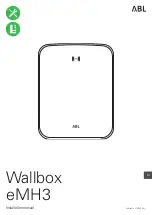
Tires
Vehicle care and maintenance
9-15
9
N00939201651
It is important to familiarize yourself with the
following terms:
Cold tire pressure:
• The measured pressure after the vehicle
has been parked for at least three hours,
or
• The measured pressure when the vehicle
is driven less than 1 mile (1.6 km) after
having been parked for three hours.
Maximum pressure: the maximum per-
missible cold tire inflation pressure for
this tire.
Recommended inflation pressure: the
inflation pressure for optimum tire perfor-
mance.
Intended outboard sidewall:
• The sidewall that contains a whitewall,
bears white lettering or bears manufac-
turer, brand, and/or model name molding
that is higher or deeper than the same
molding on the other sidewall of the tire,
or
• The outward facing sidewall of an asym-
metrical tire that has a particular side
that must always face outward when
mounted on a vehicle.
Passenger car tire: a tire intended for use
on passenger cars, multipurpose passen-
ger vehicles, and trucks that have a gross
vehicle weight rating (GVWR) of 10,000
pounds or less.
Light truck (LT) tire: a tire designated by
its manufacturer as primarily intended for
use on lightweight trucks or multipurpose
passenger vehicles.
Tread: portion of a tire that comes into
contact with the road.
Tread rib: a tread section running circum-
ferentially around a tire.
Tread separation: pulling away of the
tread from the tire carcass.
Carcass: the tire structure, except tread
and sidewall rubber which, when inflated,
bears the load.
Sidewall: portion of a tire between the
tread and bead.
Section width: the linear distance between
the exteriors of the sidewalls of an
inflated tire, excluding elevations due to
labeling, decoration, or protective bands.
Bead: the part of the tire that is made of
steel wires, wrapped or reinforced by ply
cords and that is shaped to fit the rim.
NOTE
Check each battery terminal for corrosion.
You can prevent further corrosion by wash-
ing with a solution of baking soda and water.
Grease the posts and clamps after cleaning or
tightening them.
Ensure the battery is securely installed and
cannot be moved. Also check each terminal
for tightness.
If you will not be driving your vehicle for a
long period of time, remove the battery and
store it in a place where the battery fluid will
not freeze. The battery only should be stored
with a full charge.
Before cleaning the battery, tighten all the
filler port caps to keep dirt and moisture out.
Tires
WARNING
Driving with tires that are worn, damaged
or improperly inflated is dangerous.
These type tire conditions will adversely
affect vehicle performance.
These type tire conditions can also cause a
tread separation or blowout which may
result in an accident causing serious
injury or death.
Tires, including spare tire, degrade over
time with age even when they are not
being used.
It is recommended that tires over 6 years
generally be replaced even if damage is
not obvious.
WARNING
BK0249100US.book 15 ページ 2017年5月10日 水曜日 午前8時49分
Содержание Outlander 2018
Страница 1: ...Outlander 2018 OWNER S MANUAL...
Страница 11: ...BK0249100US book 9...
Страница 21: ...BK0249100US book 10...
Страница 29: ...BK0249100US book 8...
Страница 328: ...BK0249100US book 247...
Страница 329: ...BK0249100US book 248...
Страница 427: ...BK0249100US book 6...
Страница 441: ...How to calculate your gasoline mileage BK0249100US book 1...
















































